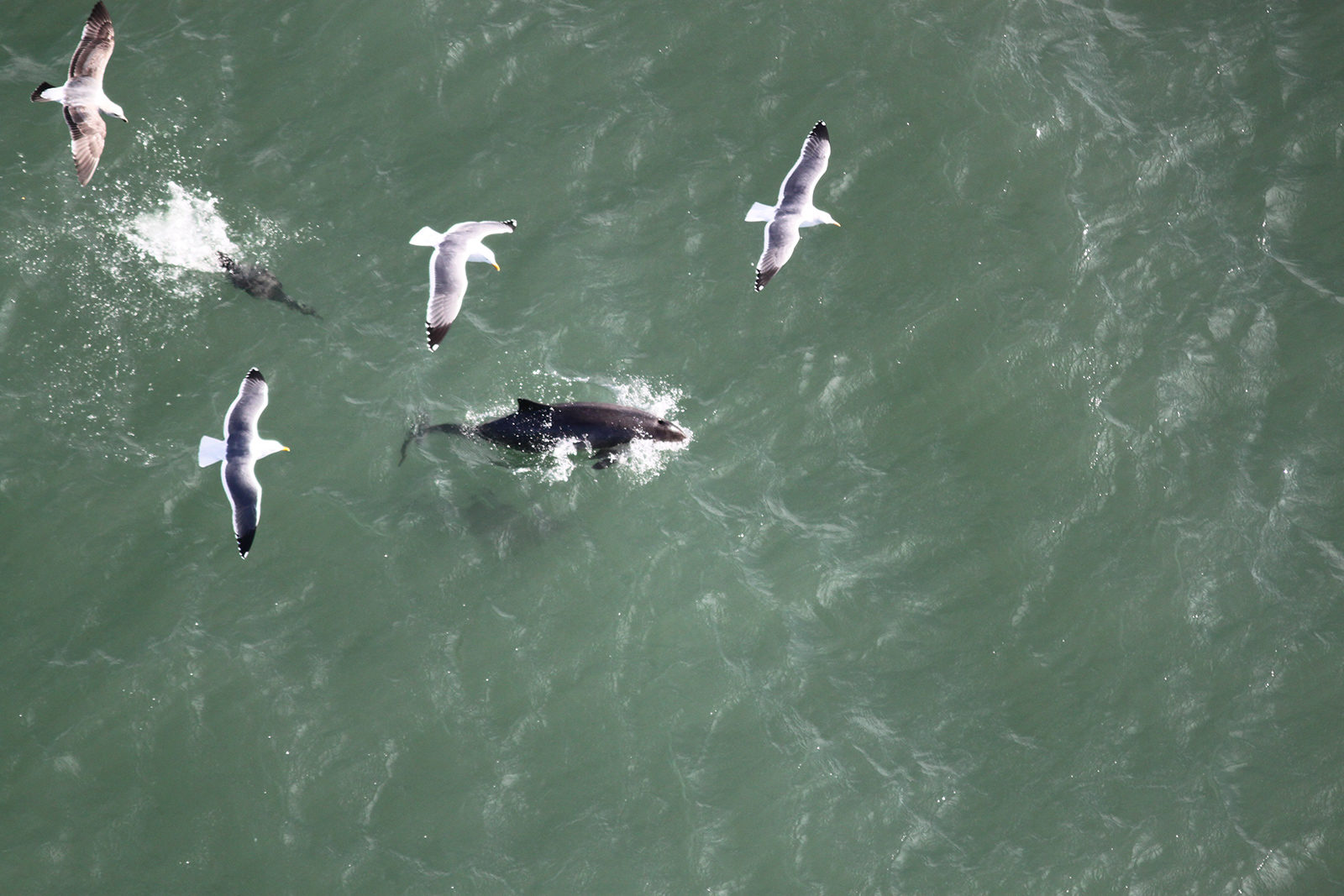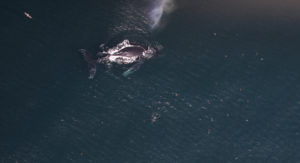Cavallo Point at Fort Baker is not just a place to watch sailboats go by as the morning sun illuminates the Golden Gate Bridge. It’s also a great place to watch the water surge in and out with the tides. And with a little patience, you might see a black dorsal fin cut the swirling water, followed by another, smaller fin. A mother harbor porpoise and her calf are rolling at the surface, entering the Bay. In the calm of a slack tide, if they come close enough, you can hear them breathe: two sharp chuffs.
The old sailors called them “puffing pigs.” Even the word “porpoise,” from the Latin porcus piscis, means “pig fish.” Of course, they are neither fish nor pig; they are marine mammals or, more precisely, cetaceans (the family that includes whales, dolphins, and porpoises). Blunt-snouted and stocky creatures, they have plenty of blubber to keep them warm. But they are agile in the water, with powerful flukes that propel them easily through swells and currents.
Standing on this rock at the southern tip of Marin County today, you can often see porpoises swimming past in groups of two or three. From the much higher vantage point of the Golden Gate Bridge, you might count as many as 20 or 30. Through the green water you can watch them traveling, or loafing, or spinning on their sides as they make a dash for a fish, then pop up beneath a flock of excited gulls.
Such sightings are all the more remarkable because for many decades porpoises weren’t seen inside the Bay. Now, however, the Bay Area is one of the few metropolitan areas in the world where you can see cetaceans every day.
More than a wildlife spectacle, the presence of these shy animals could be telling us something positive about the health of the Bay ecosystem. Big mammals, especially carnivores, are in decline everywhere. Unless humans intervene, as with the wolves reintroduced to Yellowstone, they rarely make a comeback. Yet it’s happened here–the porpoises have “reintroduced” themselves to San Francisco Bay.
No one predicted the return of the porpoises. Ever since I started whale-watching here in the 1970s, I had only seen them west of the Golden Gate, mostly as they fled our approaching boat. In the late 1980s, I was on a team of biologists hired to conduct a census of harbor porpoises in the Gulf of the Farallones National Marine Sanctuary. During three years of boat-based surveys, we never spotted a single porpoise east of the bridge.
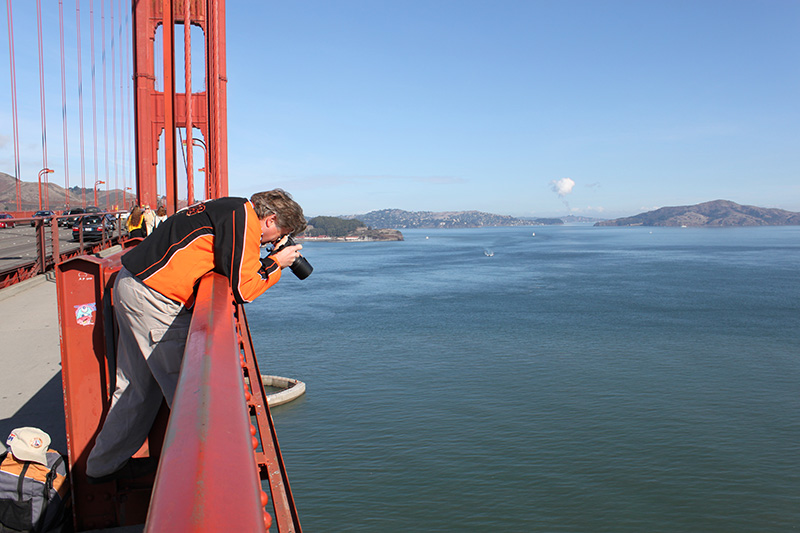
But we know they used to be here. Bones found in the Emeryville shellmound suggest the local Ohlone people consumed harbor porpoises in small quantities for some 2,000 years. In a mid-19th-century report, West Coast whaler Charles Scammon said of harbor porpoises, “They feed upon fish, and are occasionally taken in seines that are hauled along the shores of San Francisco Bay by the Italian fishermen.” And there are accounts from the 20th century, including one from the family that still operates the Tiburon-Angel Island ferry service. Its founder, the late Milt McDonogh, grew up around the docks in Tiburon and remembered seeing harbor porpoises there in the 1920s and 1930s.
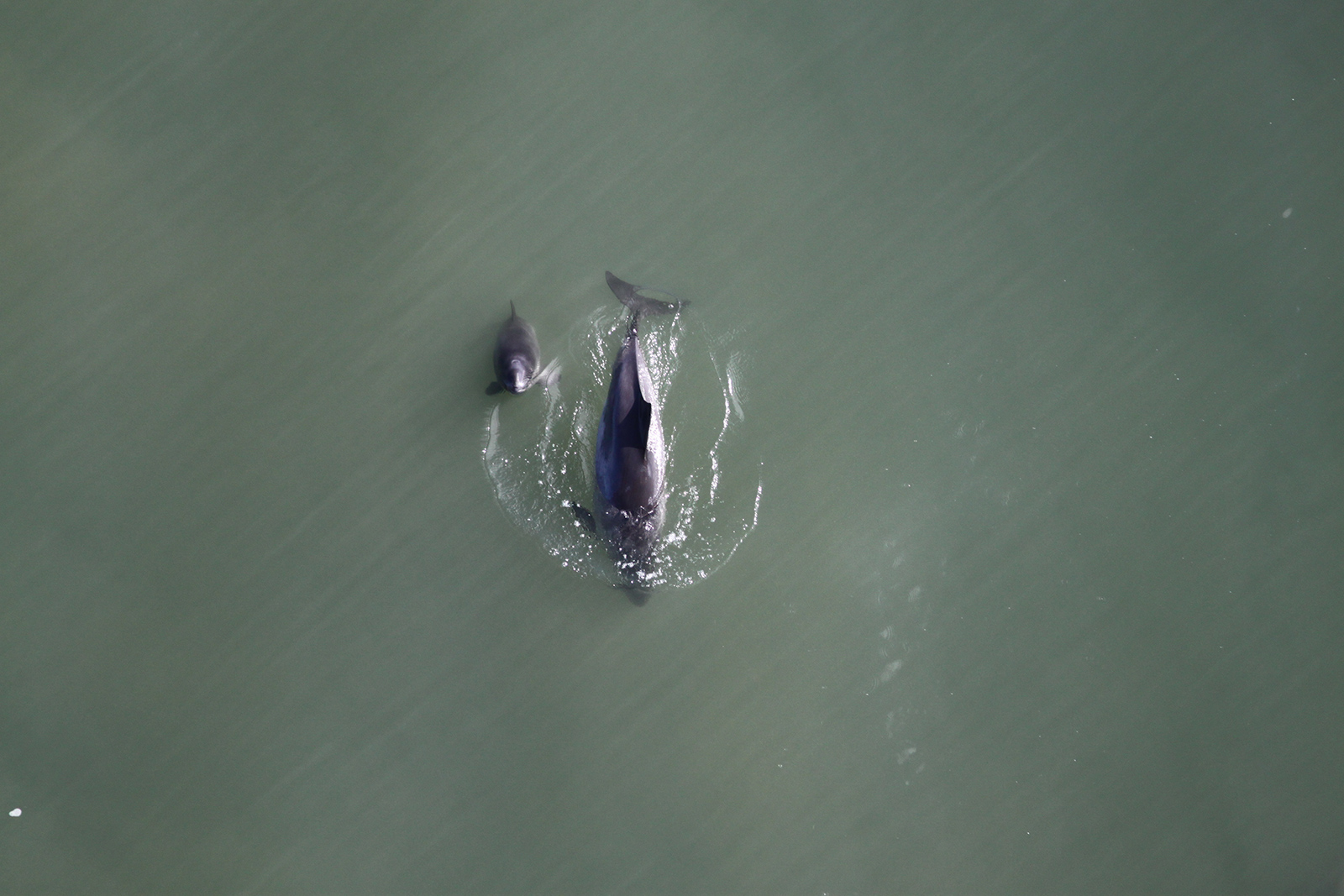
It’s unclear exactly when harbor porpoises abandoned the Bay, or why, but they seemed to have disappeared by the 1940s. Disturbance from ship traffic and environmental degradation likely played a role. The onset of World War II may have been the final stroke. To protect the harbor from submarine attacks, the navy stretched a steel net across the Bay from Sausalito to San Francisco. The net would have been a formidable obstacle to porpoises, an acoustic as well as physical barrier. The heavy mesh, straining against the currents, must have made an underwater racket. For animals that depend on their acute hearing to communicate and to locate prey, the noise might have been deterrent enough.
So why are the porpoises back now? Are ocean conditions driving them into the Bay? Or are conditions in the Bay luring them in from the ocean? Perhaps it’s simply an increase in population coupled with an increase in available prey. Aerial surveys by the National Marine Fisheries Service do show a long-term trend of increasing abundance in harbor porpoises locally, helped by a mid-1980s ban on gill nets, which killed many porpoises as bycatch. The most recent estimate is that 9,000 harbor porpoises inhabit coastal waters between Pigeon Point in San Mateo County and Point Arena in Mendocino County.
Meanwhile, variations in the marine environment may have resulted in changes to the porpoises’ prey. Harbor porpoises along our coast are known to eat schooling marine fish, such as herring, anchovy, and jacksmelt, plus rockfish and squid. It’s possible that unusually low rainfall from 2007 to 2009 led to an influx of salt water into the Bay, which brought in fish species that attracted the porpoises. Also, thanks to modern sewage treatment systems and the regulation of industrial effluents, Bay water is less polluted than it was the last time the porpoises ventured inside the Golden Gate.
Larger-scale changes could also be having an effect. Marine scientists have recently correlated atmospheric conditions in the Pacific Ocean with winds and upwelling that can alter the habitat in estuaries, including San Francisco Bay. For the past several years, the Bay has been experiencing an ecological “regime shift” toward higher productivity of plankton and fish. We know the local herring population is bouncing back, and that’s a boon for porpoises.

I was first tipped off to the porpoises’ return in 2008, when I got a call from San Francisco State University minke whale expert Jon Stern, who was surprised to see them from his boat off Sausalito. That spurred me to search the shorelines between the central Bay’s three main bridges. Everywhere I went, I found porpoises! In particular, deep trenches and steep peninsulas seemed to attract them, presumably because fish are concentrated there by strong tidal rips. Near Yellow Bluff, just north of Cavallo Point, up to a dozen porpoises at a time were congregating and diving, foraging for fish in ebb-tide feeding sessions.
Porpoises are now seen regularly at locations much farther inside the Bay, such as Raccoon Strait, and near Angel, Alcatraz, and Treasure islands. Passengers on the commuter ferries have seen them as far south as the San Francisco-Oakland Bay Bridge. There is a reliable report from July 2009 of harbor porpoises at East Brother Island off Richmond. A veteran skipper told me about a small cetacean, which he believed to be a harbor porpoise, in Suisun Bay in March 2009. If correct, this would be the farthest inland record in the San Francisco Bay-Delta Estuary.
Most of what we know about harbor porpoises is based on the examination of stranded animals–carcasses. With their regular appearance in the Bay, we now had a chance to learn how they live in their element. To organize the scientific endeavor, several colleagues and I put together a team called Golden Gate Cetacean Research and obtained a federal permit to approach the porpoises by boat. We also had an extraordinary resource: the Golden Gate Bridge. From its deck, 220 feet above sea level, we can observe behavior nearly impossible to see from a boat: underwater feeding, chasing, and nursing, or riding the wake of a passing tanker. We have even seen porpoises mating, something never before observed in the wild.
The porpoises have a synchronized reproductive cycle, culminating in an early summer calving season quickly followed by a peak in mating behavior. Each spring the males’ hormones kick into overdrive. Undergoing tremendous growth, their “megatestes” reach up to 4 percent of their body weight–a ratio extraordinarily high for any mammal. Promiscuity is the rule in porpoise society, and males pursue females with persistence and vigor. As with almost all of their behaviors, mating is done on the move. Copulation lasts just a few seconds, complete with a splash as the pair seems to fly apart.
We know that gestation lasts 10 to 11 months and the single calves remain with their mothers for about a year. In time, we should be able to determine their birthrate, which is critical to understanding how quickly a population can recover from a catastrophe such as an oil spill. Research in the Atlantic determined that harbor porpoises calve annually, and the females are often pregnant and lactating simultaneously. However, a 20-year-old study in California came to a different conclusion, with evidence in favor of calving every other year. We hope to shed light on this question by tracking females from year to year to see whether they are accompanied by calves.
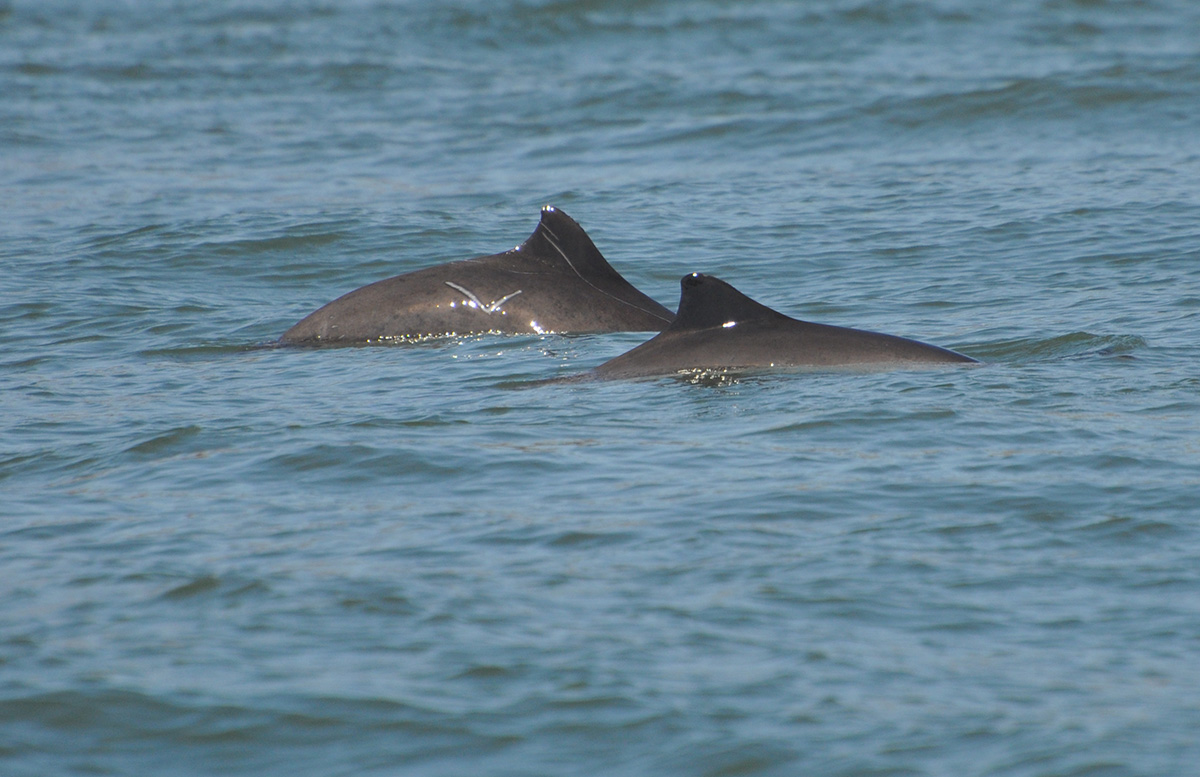
By photographing their markings, we can tell individual porpoises apart based on unique characteristics, such as body scars and skin pigmentation patterns. Porpoises give the impression of being all black from a distance, but high-resolution photos reveal more subtle colors, including pale blazes across their flanks. We’ve learned that a sizable percentage of the porpoises in the Bay sport scratches and scars. Some marks are obviously due to close encounters with fishing nets, while others are more enigmatic. They seem to be tough critters, and a few appear to be surviving, even thriving, despite apparently serious injuries.
In 2009, we started a Porpoise Catalog, linked to a database of sightings, which now has over 200 animals in it, a remarkable number for this hard-to-observe species. Each time we scan through a new batch of porpoise photos, whether taken from the bridge or the boat, we painstakingly compare them with prior images. The matches prove that several individuals are “regulars” in the Bay, sighted three or four times over the past year and a half.
But even with all this tracking, we still aren’t sure whether the porpoises form a resident community. Do they stay overnight in the Bay or come and go with the tides? One way to find out is to listen. We plan to place monitors, essentially three-foot-long plastic tubes crammed with electronic gear, on the seafloor to record the ultrasonic clicks porpoises emit for echolocation. After a couple of months, we’ll haul in the monitors and download the data, revealing every time porpoises passed by, day or night.
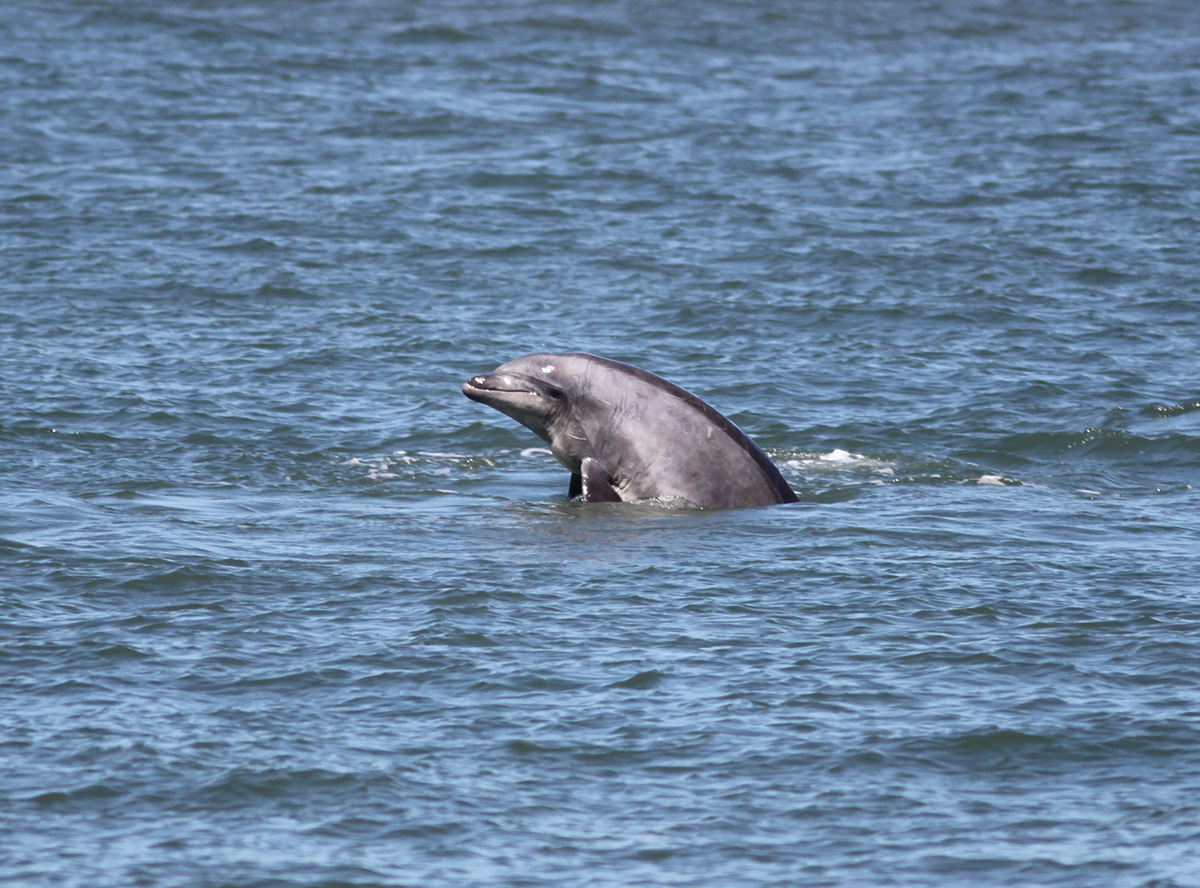
Porpoises aren’t the only small cetaceans that visit San Francisco Bay. At the northern end of their range, bottlenose dolphins sporadically enter the Bay, where they tend to hug the San Francisco shoreline. They normally travel only as far as Baker Beach or Crissy Field, but in fall 2009 a trio was spotted near Redwood City. Last year, pods of dolphins visited the cove between Fort Point and the Crissy Field fishing pier two or three times a week from June through October.
Our two Bay cetaceans are fairly easy to tell apart. Bottlenose dolphins are much heavier and twice as long as porpoises. Dolphins have a large curved dorsal fin, while porpoises show a short triangular fin during their brief surface rolls. Dolphins also tend to engage in more complex and acrobatic behavior. In the Bay, they can put on quite a show, and joggers along the breakwater have seen them slap their flukes, swim upside down, drive salmon into the air, and spyhop (stick their heads out to look around). Porpoises, on the other hand, seldom emerge fully from the water.


Compared to harbor porpoises, the dolphin population is small, perhaps 400 for all of California. Whenever we see dolphins in the Bay, we take “mug shots” to identify them because every individual is already well known. Exchanging photos with Okeanis, a marine conservation group in Moss Landing, we learned that at least 20 dolphins made the trip into the Bay in 2010. One of the dolphins we’ve seen several times is a female nearly 30 years old, first recorded in 1982 in San Diego, then spotted off Los Angeles, and later in Monterey Bay.
One reason we keep close tabs on the dolphins is to look for any interactions they might have with the porpoises. Bottlenose dolphins have been known to act aggressively toward the smaller porpoises. Dead porpoises have washed up on shore with parallel rake marks that could have been made by the teeth of bottlenose dolphins. In September 2009 biologists in Monterey Bay witnessed a fatal attack on a harbor porpoise by male dolphins. So far, however, we haven’t observed such aggressive behavior here, even when groups of dolphins and porpoises come within a hundred yards of each other.
Over the next few years, our work to unravel the mystery of the porpoises’ return may also lead us to understand their social structure. It’s an open question whether they maintain long-term family bonds or form alliances, as other cetaceans do. One thing is certain: Observing these intriguing animals–as scientist or enthusiast–is a pleasure. We should all take the opportunity to get out and watch these porpoises once again making their home in our own briny “backyard,” San Francisco Bay.
Where to See Harbor Porpoises
Porpoises, which are in the Bay year-round, keep to a loose schedule based on the tides, but their whereabouts also depend on the interplay of currents and the presence of prey fish.
Cavallo Point, at Fort Baker in Marin, is a good place to observe porpoises at the beginning of the ebb tide, when porpoises may be as close as 30 feet off the rocks. In San Francisco, porpoises can sometimes be seen working the flood tide off the pier at Crissy Field. A knot of gulls on the water often means a seal, sea lion, or porpoise is actively feeding there, so watch carefully. And bring binoculars.
But the best place to watch for porpoises (if you don’t mind heights) is from the Golden Gate Bridge’s pedestrian walkway. Check the tide tables and time your visit to coincide with the currents running at maximum flood, an hour or two before a big high tide. There are two good zones — one near the north tower, and one near the south tower (see map for areas where porpoises concentrate). Walking slowly all the way across, taking time to scan below frequently, will almost always result in a few sightings.
Calling All Citizen Scientists
Information about your sightings of porpoises or dolphins in San Francisco Bay is valuable and adds to our knowledge of these species. Submit reports at ggcetacean.org. Send your photos for us to compare against our catalogs.

